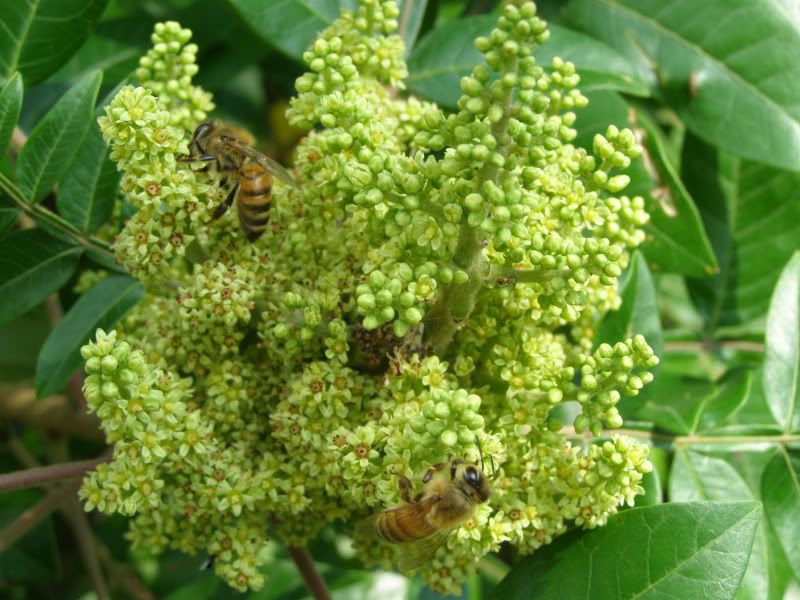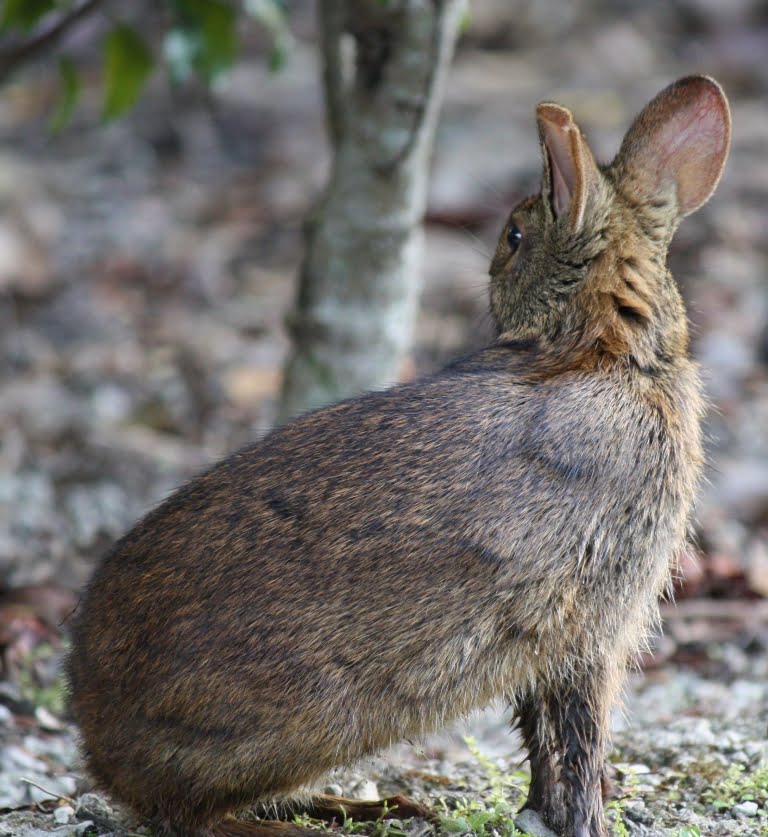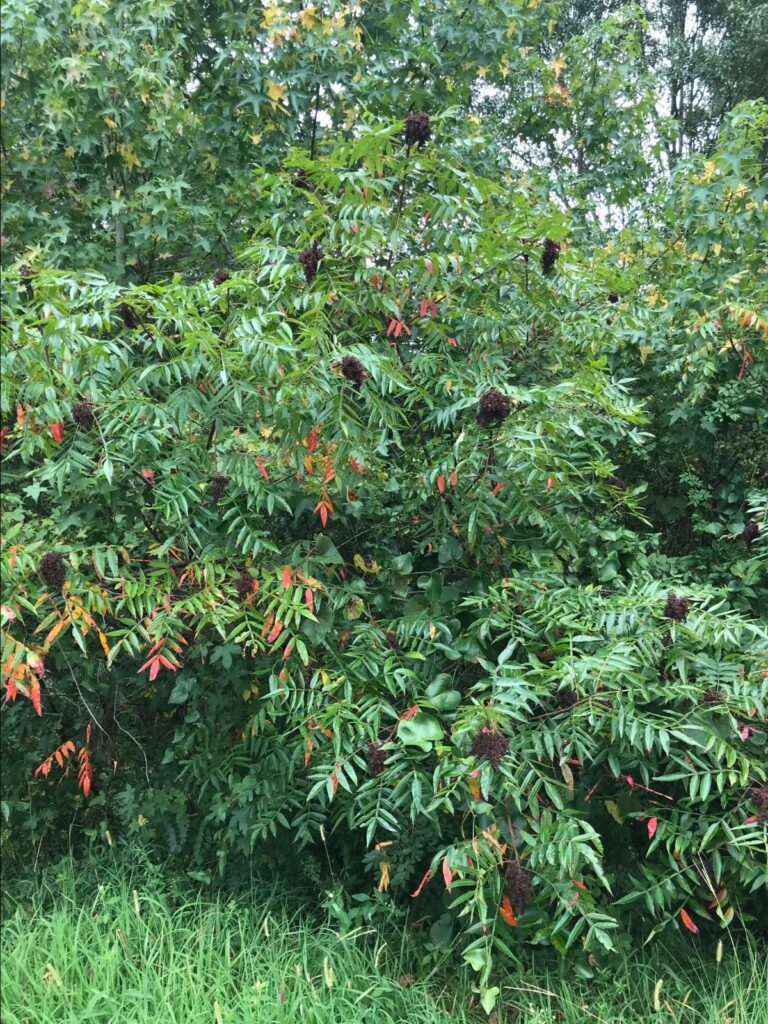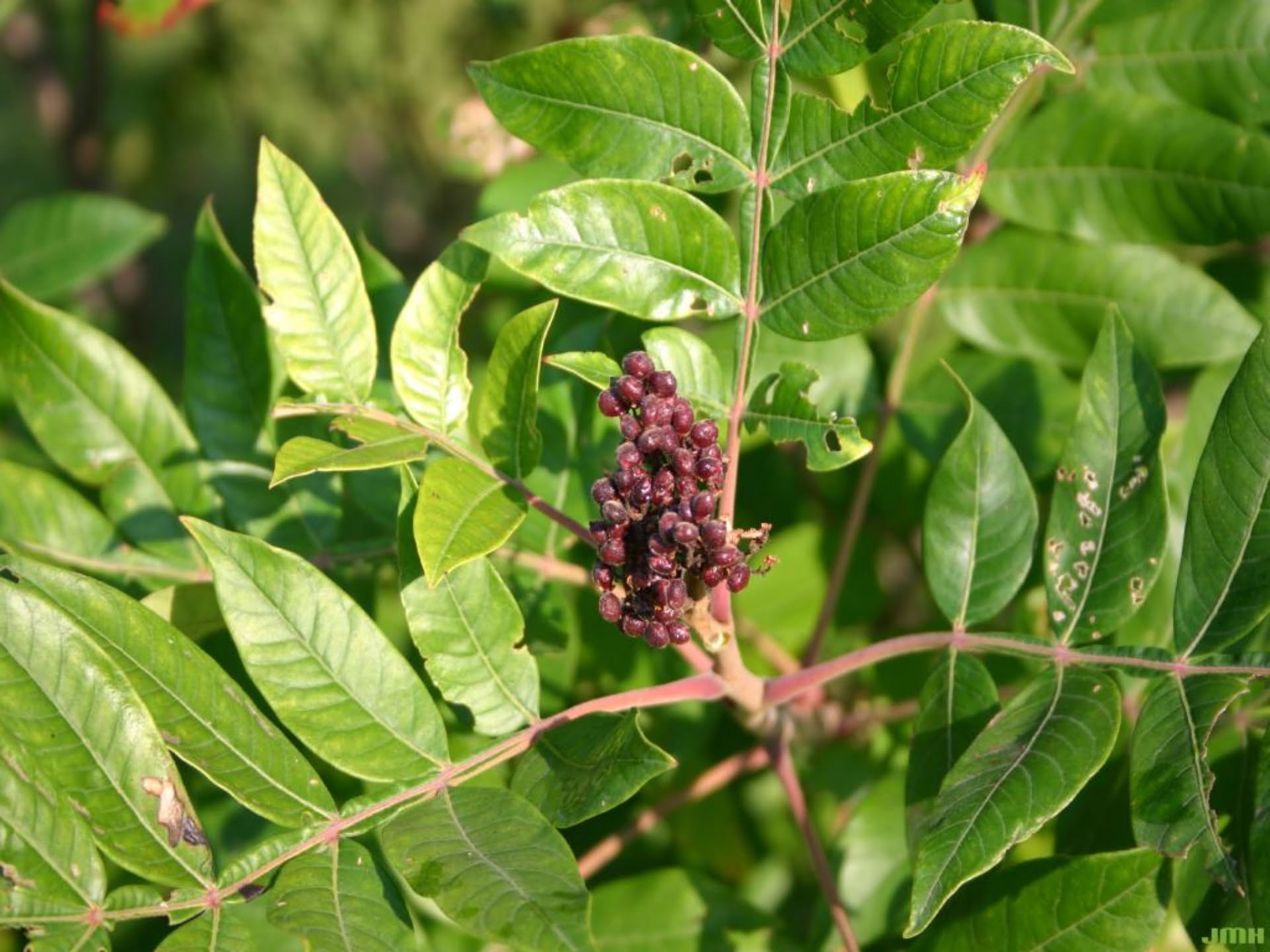A Bounty for Wildlife
Nectar and Pollinators
Dwarf Sumac’s flowers are a rich source of nectar that attracts various pollinators like bees and butterflies. The plant blooms in late summer, providing sustenance to insects when other flowering plants may be past their peak.

Fruits for Birds and Mammals
The red berry-like fruits, technically known as drupes, are another essential feature of this plant. These fruits persist into the winter, offering a food source when other resources are scarce. Birds and some mammals, including deer, are known to consume these fruits, benefiting from their nutrient content.

Shelter and Habitat
The dense growth of Shining Sumac offers shelter to a variety of wildlife, from insects to small mammals. Its ability to grow in different conditions—from well-drained sandy soils to seasonally wet areas—means it can provide habitats in a variety of ecosystems.

